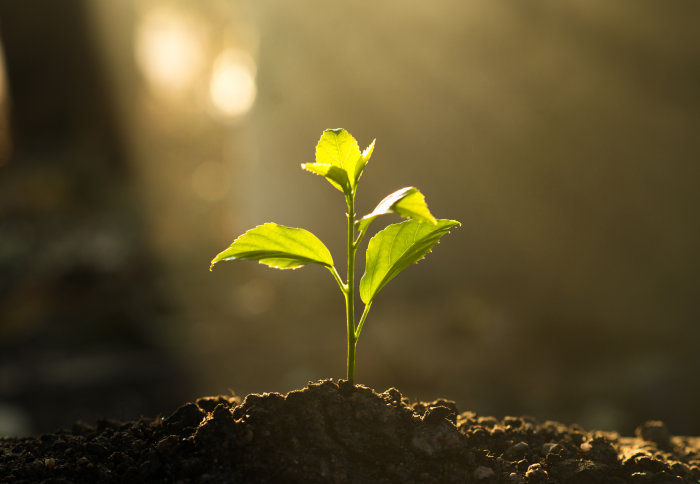What Do Plants Use Carbon Dioxide For


Under warmer conditions, plants can take upward more than carbon dioxide past using carbon more efficiently for growth, shows a new study.
Plants take in – or 'fix' – carbon dioxide from the atmosphere during photosynthesis. Some of the carbon is used for constitute growth, and some of it is used in respiration, where the establish breaks down sugars to become free energy.
Plants may be more capable of compensating the negative effects of warming on carbon fixation than previously thought Dr Samraat Pawar
The balance betwixt the release of carbon dioxide (CO2) during respiration and fixation of carbon during photosynthesis affects the growth of the institute. Over the world, this residuum also affects the global carbon residuum – how much is stored in living things compared to gratis in the atmosphere. The faster the charge per unit of photosynthesis relative to respiration, the greater the charge per unit at which atmospheric carbon is 'sucked in' by ecosystems.
As CO2 rises in the atmosphere from man input, which leads to the planet warming, the balance betwixt photosynthesis and respiration can shift in individual plants. In a new report published this week in Proceedings of the National Academy of Sciences, researchers accept found that in warmer conditions plants change how they apply carbon - using more for growth.
By using more CO2 for growth, plants are 'fixing' more CO2 from the atmosphere equally they lock it upward in their leaves and stems.
Allocating carbon
Previously, scientists had measured the unproblematic ratio between photosynthesis and respiration charge per unit at a given temperature to estimate found responses. However, the team take discovered a third fundamental cistron that determines the ratio, called the 'carbon allocation efficiency'.
The new written report, led by researchers from Imperial College London and the University of Exeter, should permit scientists to more accurately predict the response of plants to climate change using carbon allocation efficiency.
This factor determines what happens after the CO2 is taken in during photosynthesis – whether information technology is used for growth or respiration. The squad found that as temperatures ascension, plants can allocate more carbon for growth, effectively improving their net carbon proceeds.
Predicting ecosystem responses
To find this out, they used a combination of mathematical modelling and data from laboratory experiments with algae. They also looked beyond diverse plant species, both on country and in water, and concluded that a warming-induced increment in carbon allocation efficiency is a general phenomenon.
Study co-author Dr Samraat Pawar, from the Section of Life Sciences at Imperial, said: "Plants may be more capable of compensating the negative effects of warming on carbon fixation than previously thought, across both aquatic and terrestrial ecosystems. Our study provides a new way to better predict the effect of warming on carbon fixation by individual plants, and ultimately whole ecosystems."
-
'Role of carbon allocation efficiency in the temperature dependence of autotroph growth rates' by Bernardo Garcia-Carreras, Sofia Sala, Daniel Padfield, Dimitrios-Georgios Kontopoulos, Elvire Bestion, C.-Elisa Schaumb, Gabriel Yvon-Durocher, and Samrat Pawar is published in Proceedings of the National University of Sciences.
Article text (excluding photos or graphics) © Purple College London.
Photos and graphics subject to tertiary party copyright used with permission or © Royal Higher London.
Hayley Dunning
Communications Partition

Contact details
What Do Plants Use Carbon Dioxide For,
Source: https://www.imperial.ac.uk/news/187327/how-plants-carbon-affects-their-response/#:~:text=Plants%20take%20in%20%E2%80%93%20or%20'fix,down%20sugars%20to%20get%20energy.
Posted by: owensgiand1987.blogspot.com


0 Response to "What Do Plants Use Carbon Dioxide For"
Post a Comment